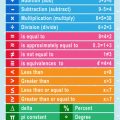Introduction: Palmistry and the British Lens
In the gentle glow of a rainy afternoon, one can almost imagine Victorian parlours filled with curious minds peering into the mysteries of the hand. Palmistry, or chiromancy, has long held a peculiar place in British society—its roots entwined with folklore, mysticism, and an unspoken fascination for destiny. Yet, beyond the flicker of candlelight and whispered fortunes, palmistry in Britain is subtly shaped by something far more tangible: the enduring influence of the class system. The British Isles, with their centuries-old social hierarchies, have always coloured how people see themselves and others—even in matters as intimate as interpreting the lines and mounts of a palm. To truly understand palmistry through a British lens is to appreciate how these social structures have not only influenced who seeks such guidance but also how each mount’s meaning is interpreted and valued across different classes. This article delves into the intersection between ancient palm reading traditions and the nuanced realities of Britain’s class divisions, revealing how culture silently guides our interpretation of fate etched on every hand.
2. Mounts in Palmistry: An Overview
When we look at the palm, the mounts—those gentle, fleshy rises beneath each finger and at the base of the thumb—hold a tapestry of symbolism that has fascinated British palmists for centuries. In the parlours of Victorian England and even in today’s modern London, these mounts are not merely physical features; they are seen as landscapes reflecting one’s inner drives, aspirations, and even social bearings. Each mount is named after a classical planet or figure, echoing an ancient wisdom brought into British culture through generations of spiritual seekers and curious aristocrats alike.
The Symbolic Geography of the Hand
Within British palmist circles, mounts are read not only for their individual meanings but also for how they interact—much like people within Britain’s own class system. For example, a well-developed Mount of Jupiter beneath the index finger is traditionally associated with ambition and leadership—traits historically admired among the upper classes. Meanwhile, a pronounced Mount of Venus near the thumb might suggest warmth and sociability, qualities cherished in both working-class communities and aristocratic salons.
Key Mounts and Their British Interpretations
| Mount | Location | Traditional Meaning | British Class System Interpretation |
|---|---|---|---|
| Jupiter | Beneath Index Finger | Ambition, Authority | Leadership roles; upward mobility in society |
| Saturn | Beneath Middle Finger | Responsibility, Wisdom | Sobriety valued in middle/upper classes |
| Apollo (Sun) | Beneath Ring Finger | Creativity, Fame | Cultural status; artistic recognition across classes |
| Mercury | Beneath Little Finger | Communication, Wit | Essential for social networking; often highlighted in rising classes |
| Venus | Base of Thumb | Passion, Sociability | Camaraderie; valued in both working-class kinship and elite hospitality |
| Luna (Moon) | Palm edge below Mercury mount | Imagination, Intuition | A mark of spiritual or creative leanings; sometimes linked to nonconformity or bohemian lifestyles in Britain’s social margins |
| Mars (Inner & Outer) | Beneath Mercury & Venus mounts respectively | Courage, Resilience | Toughness respected in both urban grit and landed gentry traditions |
The Interplay Between Mounts and Social Structure
The interpretation of these mounts in Britain is often subtly entwined with notions of class and status. A palmist at a country house might see a prominent Mount of Jupiter as an omen for continued influence within local governance. In contrast, a London street reader could view a strong Mount of Mercury as an indicator that someone will successfully navigate shifting social circles. Thus, to explore the hand’s mounts is to journey through both personal destiny and the echoes of Britain’s enduring social landscape.
![]()
3. The British Class System: A Brief History
To truly grasp how palmistry and the reading of mounts intertwine with British society, one must look beyond the lines of the hand and into the layered tapestry of the nation’s social structure. The British class system is not merely an academic concept; it is a living force, subtly shaping perceptions, aspirations, and even the way people interpret their destinies.
Historically, Britain has been governed by a rigid hierarchy. At the summit stood the landed gentry and aristocracy—families whose names echoed through grand halls and whose estates stretched across rolling countryside. Their identities were woven from land ownership, heraldic titles, and centuries-old traditions. Below them were the burgeoning middle classes: merchants, professionals, and entrepreneurs who carved their fortunes from trade and industry during the Industrial Revolution. And beneath these strata rested the working class, whose lives revolved around labour, community, and resilience.
This intricate web of class distinctions did more than dictate where one lived or worked; it sculpted national attitudes towards fate, ambition, and self-perception. In salons adorned with velvet drapes, palmists might have read the mounts of an heiress in light of her presumed destiny—to preserve legacy and uphold family honour. In contrast, a miner’s calloused hands could be interpreted through a lens of perseverance and survival.
These divisions linger, echoing quietly in contemporary Britain. While modern society champions mobility and meritocracy, old patterns persist in subtle ways—accent, education, postcode all still carry weight. The British sense of humour about class (“knowing your place” or being “a bit posh”) belies an undercurrent of awareness that social roots run deep.
Thus, as we explore how palmistry adapts to its cultural context, we begin to see that every mount read in Britain carries not only individual stories but also faint reverberations of a nation’s collective past—a past shaped by lords and labourers alike.
4. How Class Influences Palm Readings
In the shadowed corners of British society, class is an ever-present undercurrent, subtly shaping our perspectives and even the way we interpret the lines and mounts upon a palm. The interplay between a palm reader’s own class background and that of their client can colour every aspect of a reading, from the language used to the qualities emphasised. Let us delve into how these social structures seep into the heart of palmistry, influencing both perception and self-identity.
The Reader’s Lens: Subtle Biases at Play
A palm reader raised in the middle or upper echelons may unconsciously prize certain attributes—such as ambition (Mount of Jupiter) or refinement (Mount of Venus)—seeing them as signs of ‘promise’ or ‘potential’. Conversely, a reader from a working-class background might highlight resilience (Mount of Mars) or straightforwardness (Mount of Luna), celebrating grounded virtues. These biases are rarely overt, but they tint interpretations, creating readings that reflect not just the palm but also the reader’s world view.
Table: Mount Emphasis According to Social Class Perspective
| Mount | Upper/Middle-Class Reader | Working-Class Reader |
|---|---|---|
| Jupiter | Leadership, ambition, social success | Pride in achievement, self-made spirit |
| Venus | Cultural refinement, artistic taste | Warmth, loyalty, family strength |
| Mars | Courage in adversity (often romanticised) | Resilience, everyday bravery |
| Luna | Imagination, creativity as leisure pursuits | Resourcefulness, practical intuition |
The Client’s Identity: Self-Perception and Expectation
The client does not arrive at the reading as a blank slate; their own class identity acts as a filter for what feels possible or appropriate to hear. A client from an aristocratic background may expect—or even unconsciously direct—the reading towards destiny and legacy, while someone from a working-class lineage may be more attuned to messages about overcoming obstacles or building security. This dance between expectation and delivery shapes the narrative that emerges from the palm.
Case Illustration: A Tale of Two Palms
Consider two individuals with similar hands but different backgrounds. The mount of Mercury—linked to communication—may be interpreted for one as evidence of diplomatic skill suited for leadership (echoing old-school Oxbridge confidence), while for another it might signify adaptability or shrewdness in daily life (reflecting streetwise intelligence). Thus, social structure acts as both stage and script for palm readings across Britain.
5. Case Studies: Stories from Across the Classes
To truly grasp how the British class system subtly weaves its influence through palmistry, we must turn to lived experience—those quiet moments in a reading room when a client’s background reveals itself not just in their words, but in how the mounts of their hands are received and interpreted. Let us step into three such stories, drawn from different corners of society.
The Upper Class: The Mount of Jupiter and Inherited Authority
Lady Eleanor, descending from generations of landed gentry, presented a hand with a pronounced Mount of Jupiter. Traditionally, this signals leadership and ambition. Yet, as I traced her lifeline, she smiled knowingly—her sense of authority was less about self-made aspiration and more about upholding legacy. Here, the mount was read not for hungry ambition, but as a reflection of inherited responsibility and the pressure to maintain family tradition. The interpretation shifted gently: the mount became a symbol of stewardship rather than conquest.
The Middle Class: The Mount of Mercury and Social Mobility
Mr. Patel arrived with a handshake full of energy and curiosity—a teacher’s hand, busy with ink stains. His Mount of Mercury stood lively and high, speaking to intellect and adaptability. For him, this was less about cunning or trickery (as some older palmists might have suspected) but rather his striving for social mobility through education and wit. The reading took on an encouraging tone; his mount was celebrated as the seat of communication skills that could bridge classes, carrying him and his children towards new horizons.
The Working Class: The Mount of Mars and Resilience
Mrs. O’Donnell’s hands bore calluses from years in service work, her Mount of Mars broad and firm beneath my thumb. Traditionally, this area speaks to courage and assertiveness. Yet within the context of her story—navigating precarious jobs and tight-knit communities—it was resilience that shone brightest. The mount was interpreted not as combative aggression but as a testament to endurance and tenacity; her strength lay in getting through hardship with dignity intact.
Subtle Shifts in Meaning
Each reading became a dance between archetype and reality, between what is seen on the skin and what is felt in the soul. In Britain’s layered society, the mounts do not lose their core meaning—but their nuances bend gently towards the client’s lived experience. It is within these stories that palmistry moves beyond fortune-telling to become a mirror for social truth.
6. The Future of Palmistry: Tradition Meets Modern Britain
As the British class system continues to evolve, so too does the ancient art of palmistry. For centuries, the lines and mounts on one’s hand were often interpreted through a lens coloured by rigid social structures. Today, however, the tides are turning. There is a growing sense among both palmists and those seeking readings that the future lies in an approach that embraces intuition and equality, rather than hierarchy and preconception.
The Shifting Sands of Social Perception
Modern Britain is witnessing an awakening—a collective questioning of inherited norms surrounding status, privilege, and identity. Where once a pronounced Mount of Jupiter might have been read as a signifier of leadership suited only for those from noble stock, now it is more likely to be seen as an emblem of personal potential available to all, regardless of background. In this changing landscape, palmistry offers fertile ground for exploring how each individual’s story can transcend traditional boundaries.
From Structure to Spirit: A New Way Forward
No longer shackled by the invisible chains of class expectation, contemporary palm readers are being called to trust their intuition and read hands with fresh eyes. The mounts—those gentle rises beneath the skin—are becoming less about fixed destiny and more about living possibility. This subtle but profound shift invites practitioners and seekers alike to engage with palmistry as a spiritual conversation, not simply a set of predetermined outcomes dictated by birthright.
Welcoming Egalitarian Wisdom
As we contemplate what lies ahead for palmistry in Britain, there is a gentle invitation emerging: to honour tradition without being bound by it. By embracing an egalitarian ethos—one that recognises the unique journey and gifts of every individual—palmistry can become a tool for empowerment and connection. Each hand becomes not just a map of fate but a canvas for co-creation, reflecting both where we come from and where our hearts might yet lead us.
The future of palmistry in modern Britain is thus poised at the crossroads between heritage and hope. By weaving together intuitive insight with a commitment to social equality, we open space for hands—and hearts—to tell new stories beyond class and convention.


